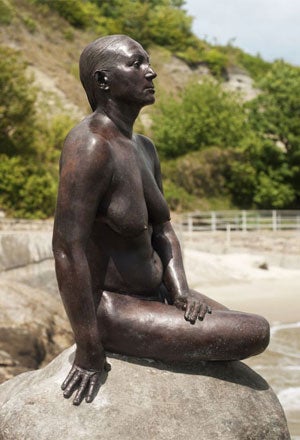Folkestone Triennial: A Million Miles from Home, Various venues

Your support helps us to tell the story
From reproductive rights to climate change to Big Tech, The Independent is on the ground when the story is developing. Whether it's investigating the financials of Elon Musk's pro-Trump PAC or producing our latest documentary, 'The A Word', which shines a light on the American women fighting for reproductive rights, we know how important it is to parse out the facts from the messaging.
At such a critical moment in US history, we need reporters on the ground. Your donation allows us to keep sending journalists to speak to both sides of the story.
The Independent is trusted by Americans across the entire political spectrum. And unlike many other quality news outlets, we choose not to lock Americans out of our reporting and analysis with paywalls. We believe quality journalism should be available to everyone, paid for by those who can afford it.
Your support makes all the difference.It looks like the sunny South-east is taking a moment to bask in whatever light contemporary art might throw off. Following the opening of Turner Contemporary in nearby Margate, another battered English seaside town opens a major art exhibition. Following a well-received debut in 2008, the Folkestone Triennial, curated by Andrea Schlieker, sees 19 international artists occupying the town with artworks. It's immigration and globalisation, issues that come to bear particularly on Folkestone because of its position on the Channel, which appear to have been the guiding themes here. A shuttered beach café houses a film following immigrants trying to enter Britain by Nikolaj Bendix Skyum Larsen, while Hala Elkoussy's collection of artefacts relating to Cairo's colonial history occupies a high street shopfront. Hew Locke's collection of model ships strung with gold booty hang prettily from the eaves of a church, gesturing to histories of plundering sea trade and migration.
Much of the most engaging work here strays off message, however. On the Leas overlooking the sea is Spencer Finch's wheel of 100 Pantone colour reference chips fixed to a viewing frame through which one looks out at the watery horizon, spinning the wheel until one finds an appropriate match for the tint of the sea. Of course, none of these flat, even tones can match the fluid, changeable qualities of light and colour on water – neither Pantones 621 nor 7026 can do justice to the pale, nacreous aquamarine of an optimistic Folkestone morning. It's the attempt, however, that reminds you of this.
At 12 o'clock each day someone takes a reading from the wheel, chooses the appropriate shade and raises a correspondingly dyed flag on to a set of flagpoles on Sandgate Road. Well you might call it 12 o'clock, or you might call it 5: Ruth Ewan has positioned several clocks around Folkestone that tell French Revolutionary time, the confusing, decimal system that was introduced, unsuccessfully, in France in 1793 following the formation of the French Republic. The title of Ewan's work – We Could Have Been Anything That We Wanted to Be – is a reminder of the contingency of structural systems such as timekeeping, but also of an inability to escape the systems that we've inherited, given that time is essentially an act of co-operation on an unthinkably grand scale.
A K Dolven has rescued a bell from a Leicester church that was scrapped for not being in tune with the others. Now hung, lonely and isolated from two poles over a bleak expanse of tarmac, it can be run once more. Dolven replaced the bell's clapper – it was as though its tongue had been cut out – and, like the Little Mermaid, gave it back its voice. Actually, that only happened in the 1989 Disney film version. In Hans Christian Andersen's dark, melancholic story, written in 1836, the mermaid throws herself, tongueless, into the sea. A bleak tale, yes, but a popular one – her statue in Copenhagen is a major tourist attraction, a fact that takes us tripping down to Folkestone's Sunny Sands beach, where Cornelia Parker's The Folkestone Mermaid, a new bronze sculpture, sits on the rocks gazing out to sea. Based on a cast of a local woman, she cuts a tougher, more no-nonsense figure than her suicidal Copenhagen twin. Folkestone is pragmatic, then, but optimistic.
To 25 September (www.folkestonetriennial.org.uk)
Join our commenting forum
Join thought-provoking conversations, follow other Independent readers and see their replies
Comments